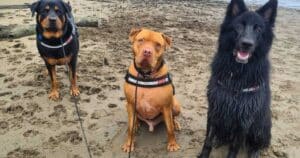

Known for its long, shaggy coat, and for being the mascot for Dulux paints for over 60 years, the Old English Sheepdog, or OES which it is often referred to as, was originally bred to herd sheep and cattle.
These guys are fun-loving and affectionate, they get along well with other dogs and pets, and make for a great family dog. They are very excitable and love clowning around, so while they’re great companions for children, you will need to watch them around toddlers who can be easily pushed over. The Old English Sheepdog is an excellent watchdog. Always alert, they will let out a big bark if something seems amiss.
The Old English Sheepdog can grow up to at least 21 inches tall and weigh between 27 –145 kg (60-100 pounds). Their long, shaggy coat is a double coat that comes in gray, blue, blue gray, blue merle, gray with white markings or white with gray markings.
Their long hair requires daily brushing to keep it clean and free of matts. Unfortunately, it’s not uncommon for them to be surrendered to rescue organisations because of the time and cost of caring for the coat.
Hardworking and intelligent the Old English Sheepdog can easily master basic commands, but will quickly become bored with repetitive training. Start obedience training early to help keep their exuberance under control, especially given their size. Because they were bred to work, prioritise activities that provide mental and physical stimulation such as hide-and-seek, fetch, or interactive toys to help your Old English Sheepdog burn off some energy and help keep boredom at bay.
Old English Sheepdogs live for their family and will therefore not cope with being kept in the backyard or left for long periods, They are prone to separation anxiety and can become destructive if they’re left alone too much. So, if you work long hours in an office, or have a busy lifestyle that they can’t be a part of, then this is not the breed for you.
Daily walks or visits to local dog parks are important to help keep your Old English Sheepdog healthy and happy.
They are not for clean freaks either. With their shaggy coats you need to be able to cope with dirt and hair falling around the place, maybe even some drool.
When it comes to the health of the Old English Sheepdog, there are a few issues to watch out for including hip dysplasia. This is where the ball and socket joint of the hip doesn’t fit together properly leading to pain and lameness in dogs as young as 4 months.
Eye issues can include cataracts and progressive retinal atrophy (PRA), which results in the deterioration of the retina, causing blindness.
They are also prone to hypothyroidism, where the thyroid gland doesn’t produce enough thyroid hormone. This is central to controlling metabolism and, while symptoms can be subtle, they include weight gain, fatigue, hair loss and skin and ear issues.
Deafness is also fairly common in the Old English Sheepdog and can be detected from as early as four weeks of age, that’s why it’s vital to find a reputable breeder that has run the appropriate tests, including DNA tests and can provide hip and elbow clearance certificates.
That’s why it is vital to fully research any breed you are considering and look for an Australian National Kennel Council registered breeder.
About the Author: Lara Shannon is a certified dog behaviourist and trainer, pet food nutrition specialist, Executive Producer and Host of Pooches at Play on Channel 10 and editor of Poochesatplay.com. Lara also runs her own dog training business in Melbourne’s Bayside area and is the Author of World of Dogs and Eat, Play, Love Your Dog

Poor gut health and dog behaviour issues
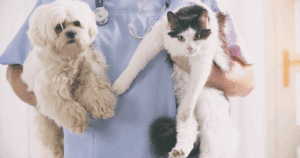
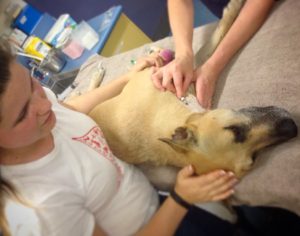
Dog blood donations save lives

Treating Noise Phobia in dogs and cats
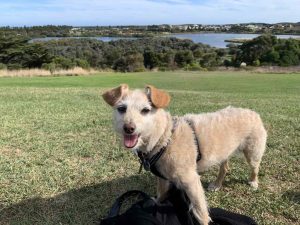
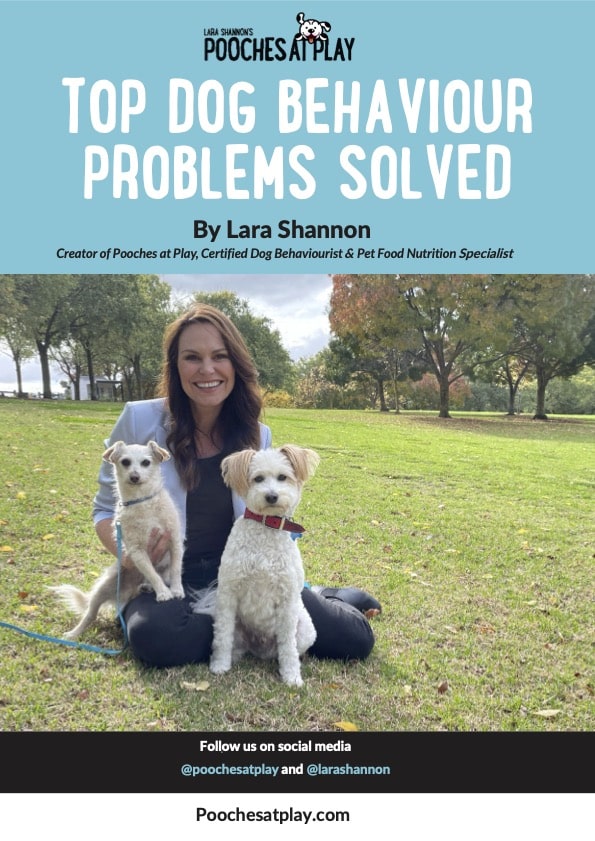


Get your paws on Lara Shannon’s best selling books ‘Eat, Play, Love (your dog) and World of Dogs.
Available in Australia, USA, UK and Canada.